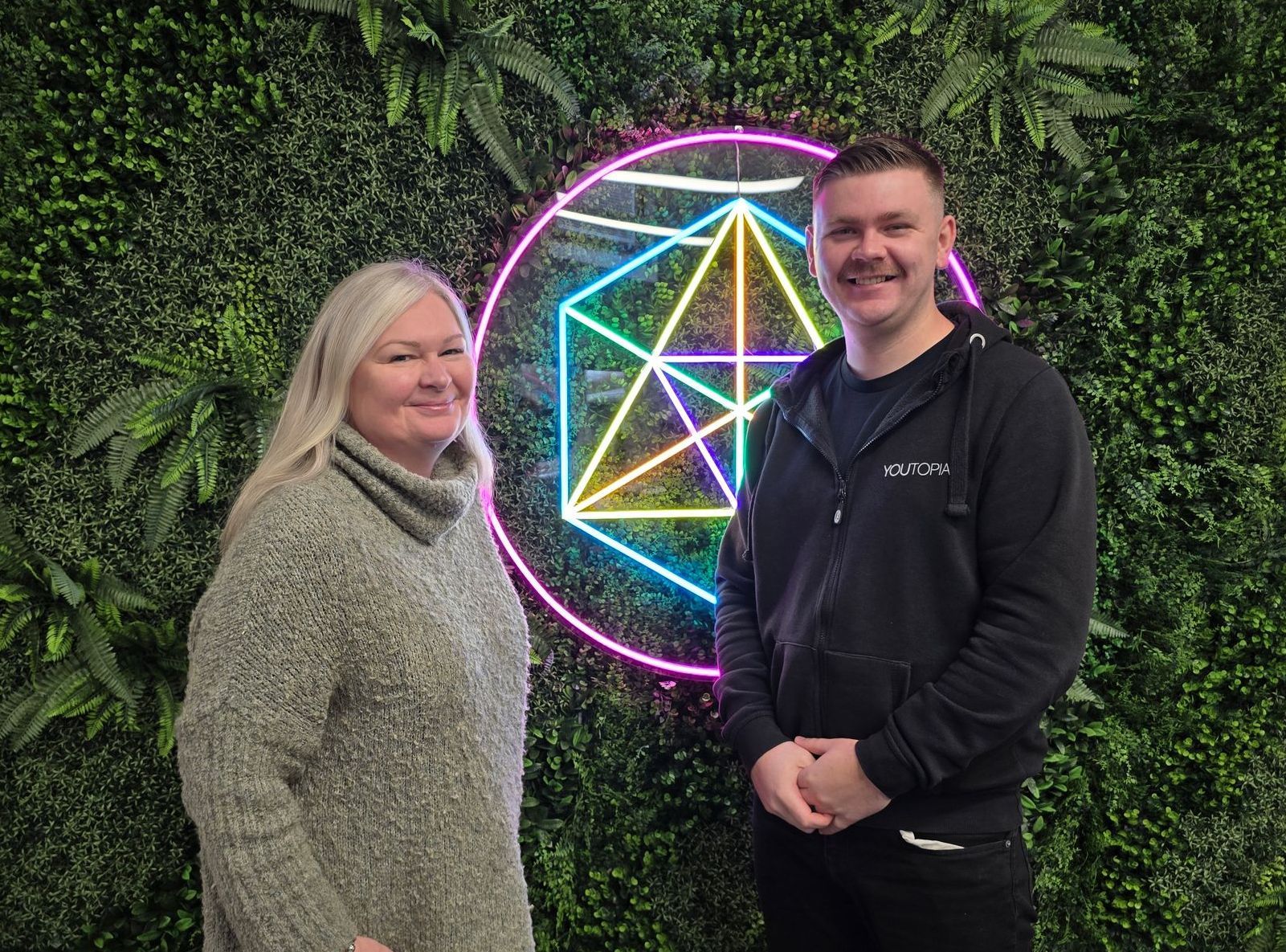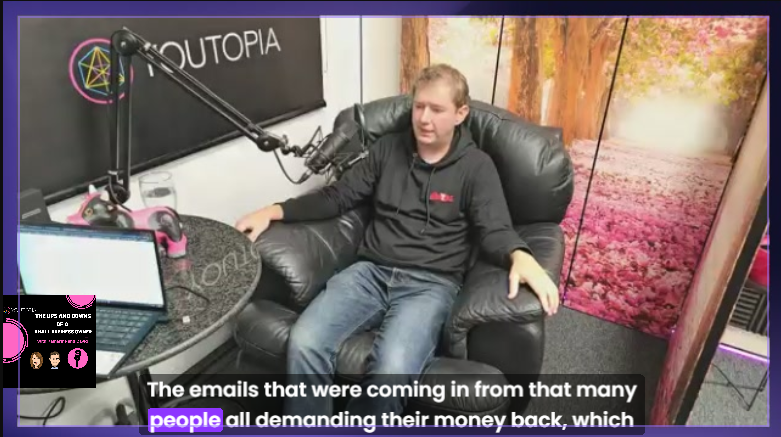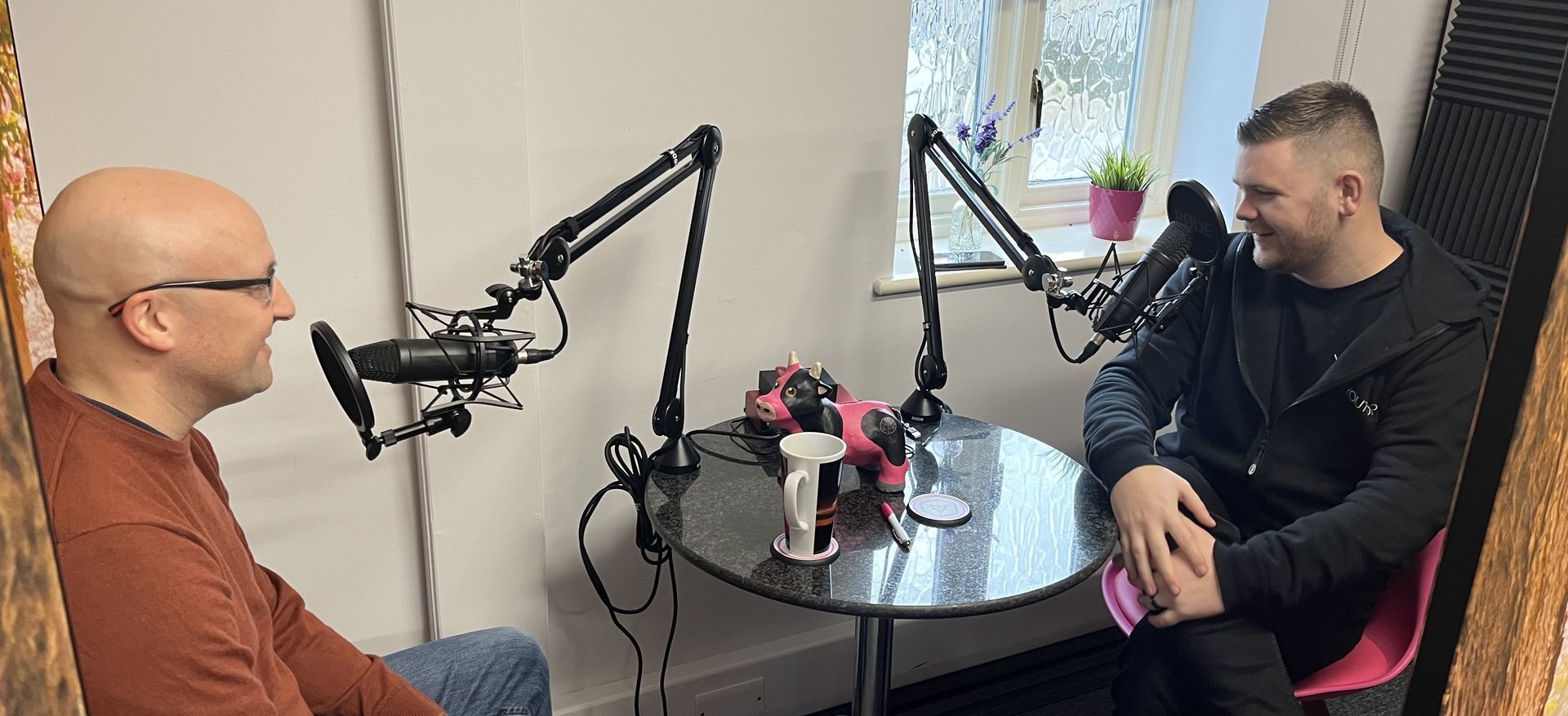Unlock Financial Resilience with 9 Strategies for Growing Your Business
Ed Neal's incredible journey to success

Today I'm with Ed Neal, who went from a flunked out student to a successful business owner and seafarer. Ed will share his incredible story of how he navigated the choppy waters of the British shipping industry in the early 80s and his incredible journey to founding Geodesa, his own telecoms business. He'll outline his 9 strategies for financial resilience and how he used the "Firefighting Cash Flow" system to power his journey to success. Join us as we explore Ed's journey and the strategies he used to unlock financial resilience and grow his business!
About Ed Neal
Meet Ed Neal, a modern day Jack of all trades. From working at sea since the age of 17 to starting his own business, Ed has seen it all. He's a yachtmaster hydrographic surveyor, business owner, and unmanned survey vessel operator. With a career spanning from the 80s to now, Ed has had his fair share of adventures, from crossing the equator for the first time to dealing with a hurricane and a flooded ship. Despite the challenges and petrifying moments, Ed has been able to make the most of every situation and has grown his business, Geodesa, into a successful venture.
Why is it important to know the best strategies for growing a business?
Knowing the best strategies for growing a business is essential for entrepreneurs and business owners. By understanding the necessary steps for business growth, business owners can identify their strengths and weaknesses and create a plan for how to maximize their resources. The ability to develop an effective growth strategy can help a business stand out in a competitive market and give it the edge it needs to succeed. Additionally, understanding the best strategies for growing a business is important for long-term success. By understanding the necessary steps and having a plan in place, business owners can set realistic goals and develop a plan to reach them. Business owners can also use the best strategies for growth to adjust their plans and strategies as needed, allowing them to remain competitive and flexible in the market. Knowing the best strategies for growing a business helps business owners maximize their resources and increase their chances of success.
Here are the steps you need to follow:
1. Identify the need for financial resilience.
2. Research the industry and understand the current trends to find potential opportunities for growth.
3. Build a plan to capitalize on those opportunities.
4. Take risks when necessary and be prepared to adapt as the situation changes.
5. Develop strategies to manage cash flow and maximize profit.
6. Develop strategies to manage expenses and reduce costs.
7. Develop a system to track performance and make adjustments as needed.
8. Develop a system to monitor and respond to changes in the market.
9. Establish a system of communication and review to ensure financial resilience.
The first step in the transcript is when Ed Neal is asked what made him go into the seafaring life. He explains that after he had flunked his GCSEs he was sitting in the 6th form common room when a guy he remembered from school came in and began talking about working on ships. He found the idea interesting and decided to look into it which led him to the General Council of British Shipping in London where he was put in touch with the Irish coastal shipping company Gardeners. They offered him a job starting in a week or two and he decided to take it without really knowing anything about seafaring. The job was a supplementary training scheme which involved working as a deck boy on a product tanker in the Caribbean. It was a four month trip and he experienced the equator ceremony and got initiated into the seafaring life.
After the four month trip was over, Ed decided to stay on in the seafaring life and went to work on a cargo ship in the Mediterranean. He signed up for a two year contract and it was during this time that he was able to learn how to navigate, read charts and use a sextant. He also took part in some of the important tasks such as anchoring and mooring, as well as performing watchkeeping duties. After the two years were up, Ed decided to move on and joined a supertanker for a further two year contract. This time he was able to experience some of the more modern navigational techniques such as using GPS, radar and echo sounding. His experience on the supertanker meant he was able to take on more responsibilities and he was soon promoted to mate. This was a big step for Ed as he had now gained the necessary experience to be eligible for a Master’s Certificate of Competency. After passing the exams, he was able to work as a master of his own ship and has since enjoyed a long and successful career in seafaring.
1. Identify the need for financial resilience.
Identifying the need for financial resilience begins with understanding how to manage cashflow and mitigate risk. This can be done through creating a budget, tracking expenses, and planning for potential disruptions. Additionally, having a financial cushion in place can be beneficial in the event of an emergency. This cushion can come in the form of an emergency fund, which is a savings account specifically set aside for unexpected or unplanned expenses. Additionally, having multiple sources of income or additional investments that can be tapped into in the event of financial hardship can be beneficial. Lastly, having an appropriate level of insurance can be key in ensuring that the business is protected in the event of a natural disaster or other unforeseen event. All of these steps can help to create a more resilient financial foundation for the business.
Another important step towards achieving financial resilience is to ensure that debt is managed effectively. This means staying on top of payments, avoiding debt when possible, and focusing on reducing debt rather than taking on more. Additionally, having a plan in place for how to pay off debt can be beneficial. This plan should include prioritizing high-interest debts and creating a budget to ensure that the payments can be made. Furthermore, having a plan for future debt, such as taking out a loan for expansion, can also be beneficial in ensuring that the debt is manageable and the payments can be made. Financial resilience also involves building relationships with lenders, investors, and other financial partners. Creating a relationship with a trusted financial partner can be beneficial in the event of an unexpected financial hardship. Having a financial partner who understands the business and is willing to offer support can be invaluable and can provide access to resources that would otherwise be unavailable. Additionally, having a financial partner who can provide advice and guidance can be beneficial in navigating financial decisions. All of these steps can help to create a more resilient financial foundation and ensure that the business is prepared for any potential disruptions.
3. Research the industry and understand the current trends to find potential opportunities for growth.
Research the industry and understand current trends to find potential opportunities for growth: In order to research the industry and understand current trends to find potential opportunities for growth, Ed Neal recommends taking a look at the General Council of British Shipping in London. This organization can provide valuable insight into the current state of the shipping industry and what types of opportunities exist. Additionally, looking at news outlets, industry reports, and other publications can help to identify any new or emerging trends that could provide opportunities for growth. Finally, it can be beneficial to connect with professionals in the shipping industry or attend conferences to gain a better understanding of the current state of the industry and what potential areas of growth may exist. By researching the industry and staying up to date on the latest trends, Ed Neal was able to identify an opportunity to start his own company, Geodesa.
Ed Neal also recommends researching the competition to identify any areas of potential growth and gain a better understanding of the industry. By researching the competition, Ed Neal was able to identify a unique niche in the shipping industry that he could fill with his own company. Additionally, researching the competition can help to identify any areas of weakness in the market that could be leveraged to gain an edge over the competition. Finally, Ed Neal suggests that researching customer needs and preferences can help to identify potential areas of growth. By understanding the needs and preferences of customers, Ed Neal was able to develop customizable solutions that provided added value to customers and set his business apart from the competition. Additionally, understanding customer needs and preferences can help to identify potential areas of growth in the industry that may have been overlooked. With these insights, Ed Neal was able to identify an opportunity to start Geodesa and make it a successful business.
4. Build a plan to capitalize on those opportunities.
In order to build a plan to capitalize on the opportunities, Ed will need to consider what resources he has available and what new resources he may need to acquire. For instance, he will need to consider whether he needs to hire additional staff, invest in new technology, or perhaps outsource certain tasks. He will also need to think about how to market the services he provides in order to attract new customers. Additionally, he will need to consider the most efficient way to manage his current customers, such as developing a customer relations management system or providing incentives to encourage loyalty. By analyzing his current resources and developing a plan to acquire or create new resources, Ed will be able to capitalize on the opportunities he has identified and grow his business.
Having developed a plan to capitalize on the opportunities, Ed will need to put that plan into action. He should develop objectives and goals, as well as timelines to ensure that he is taking the necessary steps to achieve the desired outcome. He will also need to prioritize his tasks and allocate the necessary resources to ensure that his plan is executing successfully. Furthermore, he will need to keep track of his progress to identify any changes he may need to make along the way. By taking these steps, Ed will be in a better position to capitalize on the opportunities he has identified. Finally, Ed will need to consider the long-term implications of his plan. He should consider what strategies he will need to implement to ensure sustainability and how he can use the opportunities to grow his business in the future. By taking a long-term view, Ed will be in a better position to capitalize on the opportunities he has identified and ensure his business’s long-term success.
5. Take risks when necessary and be prepared to adapt as the situation changes.
Taking risks when necessary and being prepared to adapt as the situation changes is something Ed Neal has had to do throughout his career at sea. He recounts a particularly difficult situation he faced on a survey ship in the North Atlantic. The ship had taken on 150 tons of water in the aft hold, and the engineers were unable to pump it out. The captain proposed drilling holes in the engine room bulkhead to allow the water to enter the engine room and be pumped out, but Ed and the client rep on board objected and instead took a risk and turned the ship around to head for the Azores. The risk paid off and they were able to pump the water out, tidy up and complete the job. Ed's company, Geodesa, is a great example of how taking risks and being prepared to adapt can pay off. He started the company by accident, selling SIM cards to avoid roaming charges on eBay. The business grew quickly and he soon faced a difficult situation when the telecoms provider they were buying airtime from had their service cut off. Ed had to think quickly, manage customer complaints and refunds, and eventually hang on to 60% of the customers. Taking risks and adapting in difficult situations is an important skill in any career, and Ed Neal is a great example of how it can be done successfully.
Ed has also faced difficult situations onsite. On one project, he was working on a survey ship in the North Sea when an unexpected storm hit. With no warning, the ship was hit with hurricane-force winds, and Ed had to think quickly and adapt to the situation to keep everyone safe on board. He managed to drop anchor and secure the ship to save it from drifting, and the crew were able to ride out the storm safely. Ed says that taking risks and adapting to difficult situations is something he has had to do throughout his career, but it has been worth it in the end. He has been able to accomplish more than he ever thought possible and has been able to use his experience and skills to build a successful business. His story is a great example of how taking risks and adapting to changing circumstances can lead to success.
6. Develop strategies to manage cash flow and maximize profit.
Developing strategies to manage cash flow and maximize profit is essential for any business. For Ed Neal, the founder of Geodesa, this was an especially important lesson he learned during his transition from working with a telecom company to selling SIM cards. He learned that cash flow and profit are very closely related and that if he wasn't able to manage them carefully, he could face serious financial losses. To manage cash flow, Ed implemented systems and processes to ensure that all payments were made on time and that customers were kept informed about their balance and usage. He also made sure to keep track of all of his expenses in order to accurately forecast future revenue. Lastly, he diversified his income streams and invested in marketing to increase his customer base and ensure a steady stream of income. By developing strategies to manage cash flow and maximize profit, Ed was able to ensure the success of his business. By following these steps, other entrepreneurs can also ensure their business runs smoothly and is profitable.
To maximize profits, Ed implemented cost-saving measures and looked for ways to increase efficiency. He also monitored his pricing structure carefully to ensure he was competitive but also making a profit. He also invested in technology, such as an accounting software, to make the process of tracking finances easier and more accurate. By taking these steps, Ed was able to maximize profits and ensure that the business was running efficiently and profitably. He also made sure to regularly review his financial performance to identify any areas where he could make improvements. By monitoring his finances and implementing strategies to maximize profits, Ed was able to ensure the success of his business.
7. Develop strategies to manage expenses and reduce costs.
Step 7 of the transcript is how to develop strategies to manage expenses and reduce costs. The key to this is to analyze your current expenses and identify any areas where you could reduce or eliminate them. Additionally, look for ways to streamline operations and cut costs. This could include reducing overhead, negotiating better terms with suppliers, or finding ways to reduce labor costs. Additionally, identify ways to increase revenue by increasing sales or finding ways to optimize the pricing of products and services. Finally, review the budget regularly and make adjustments as needed to ensure that expenses remain within the budget. This can help to ensure that costs remain in line and that the business continues to remain profitable.
Another strategy to reduce costs is to look for ways to automate processes. Automation can help to increase efficiencies and reduce the amount of time and resources needed to complete tasks. For example, automation of customer service tasks can help to reduce the amount of time spent on customer inquiries and minimize the need for human staff. Additionally, automation of accounting and bookkeeping tasks can help to reduce the amount of time spent on these tasks, allowing you to focus on other areas of the business. Finally, look for ways to leverage technology to reduce costs. This can include using cloud-based solutions to reduce the need for IT infrastructure or using open source software to reduce the cost of software licenses. Additionally, look for ways to utilize artificial intelligence and machine learning to automate processes and reduce the need for manual labor. By leveraging technology, businesses can find ways to reduce costs and improve efficiency.
In this blog post, we have discussed Ed Neal's incredible journey to success and the strategies he used to unlock financial resilience and grow his business. Ed's success story is a testament to the fact that with the right strategies, any business can succeed. By understanding the need for financial resilience, researching the industry, and taking risks when necessary, business owners can create a plan to capitalize on opportunities and ensure their business's long-term success. Take the lessons from Ed Neal and use them to build your own business success story.
I’d love to hear how you apply "Firefighting Cash Flow" to get financial resilience.. Leave me a comment on how it went for you or drop any questions you want me to answer!









